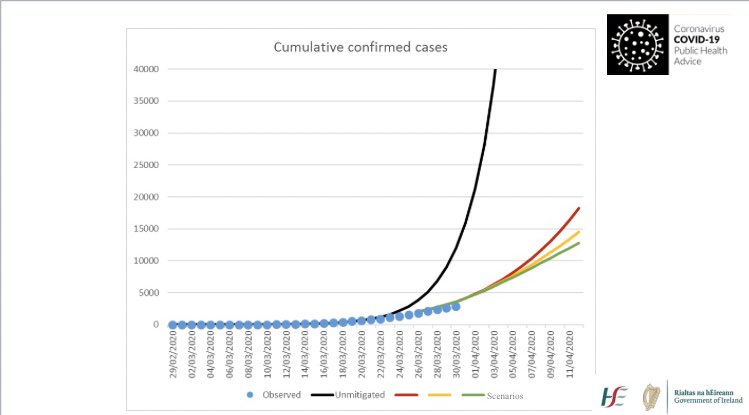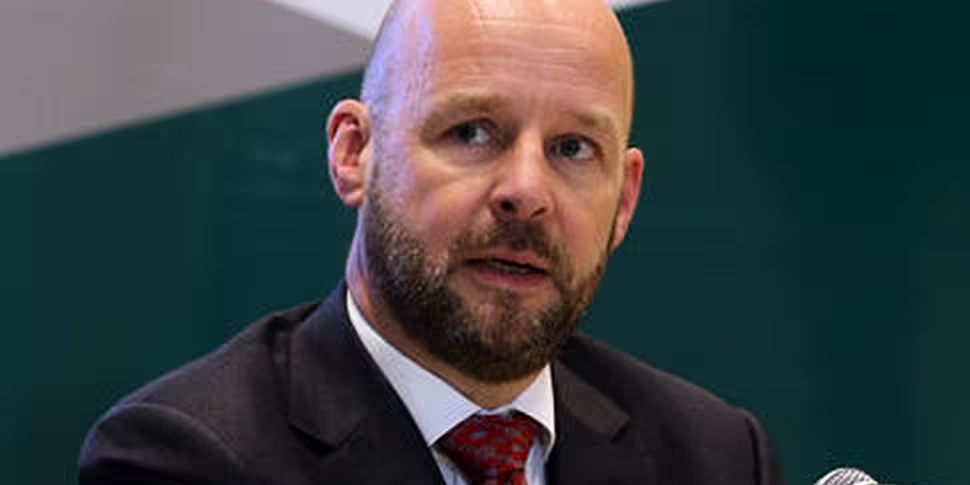More time is needed to make a "firm prediction" on when a surge of coronavirus cases might occur in Ireland, the Chair of the NPHET Irish Epidemiological Modelling Advisory Group (IEMAG) has said.
Professor Philip Nolan said that this is because we do not know as yet the full effect of new measures to combat the spread of the virus.
He was speaking at a briefing at the Department of Health this evening where it was confirmed that eight more people who were diagnosed with COVID-19 have died.
A further 295 new cases of the virus have also been confirmed, with 2,910 people now having tested positive for coronavirus in the country.
Prof Nolan said it is "very heartening to see the level of public compliance" with restrictions implemented to slow the outbreak of COVID-19.
However, he added that "another week to ten days" is needed to fully understand the extent to which those measures have worked to suppress the spread of the disease.
Outlining the process undertaken to combat the rise in coronavirus cases, Prof Nolan said the first step the modelling group took was to forecast what an "unmitigated epidemic" might look like.
If the spread of the disease could not be controlled, as many as 15,000 cases in Ireland could be diagnosed by the end of March.
These early projections drove the efforts to flatten the curve, he said.
Prof Nolan said: "We know that in the early stage of an epidemic, or when an epidemic is uncontrolled, you're going to get very rapid growth in the number of cases, you're going to get exponential growth.
"There was that very strong effort to flatten the curve with a series of escalating public health measures introduced over the last two weeks, and the good news is that we are far under that unmitigated scenario."
Such a scenario would have seen "perhaps 3,000 new cases today and 15,000 cases in total", he said.
 Graph from Professor Philip Nolan, Chair of the NPHET Irish Epidemiological Modelling Advisory Group. Credit: Department of Health
Graph from Professor Philip Nolan, Chair of the NPHET Irish Epidemiological Modelling Advisory Group. Credit: Department of HealthHe said another "very important marker" being monitored was that in the early stages of the epidemic there was a 33% daily increase in new cases.
"Taking the average over the last five days, that daily rise in new cases is now down to 15%.
Prof Nolan said this represented "a huge decrease in the rate of exponential growth".
He added: "We know it's going to take at least seven to 14 days for any public health measure to have its full effect.
"We should be seeing the effects of early interventions like school and university closures now, but it will take some time, well into next week, before we see the full effect of the measures we're taking since last Friday.
"There is no room for complacency, we've got the growth rate down from 33% to 15%, we need to get that very close to zero in order to manage this outbreak.
This was echoed by Dr Tony Holohan, Chief Medical Officer at the Department of Health.
He said “We are beginning to see encouraging signs in our efforts to flatten the curve. However, we cannot become complacent as we are still seeing new cases and more ICU admissions every day.
“Our strategy remains the implementation of public health restrictions to interrupt the spread of the virus and prevent people from arriving to ICU in first place.”
LIVE: Update from the Department of Health on COVID-19 in Ireland. #coronavirusireland https://t.co/48F2t6hxoh
— NewstalkFM (@NewstalkFM) March 30, 2020









